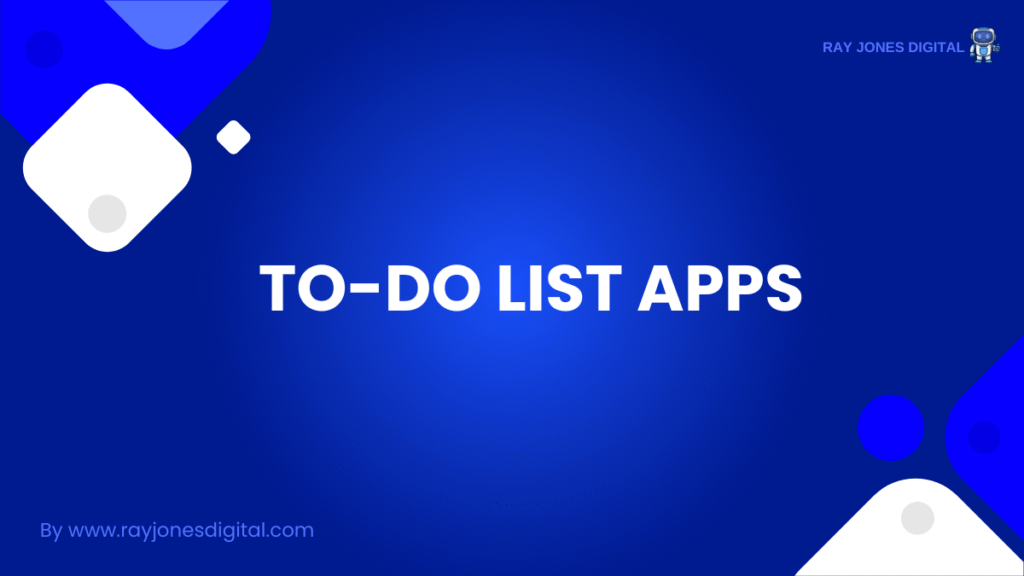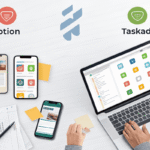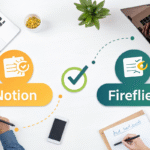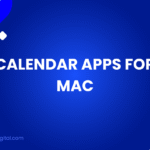
Managing tasks when you have ADHD feels like trying to catch smoke with your bare hands. Traditional To-do list apps often make things worse, creating overwhelming lists that trigger anxiety instead of promoting productivity. The good news? Some developers have cracked the code on ADHD-friendly task management.
These five apps understand how ADHD brains work. They combat overwhelm with smart design choices, provide the right amount of structure without rigidity, and help you maintain focus when your mind wants to wander. Whether you struggle with executive function, hyperfocus, or time blindness, these tools can transform your daily productivity.
Why Standard To-Do Apps Fail People With ADHD
Most task management apps follow the same tired formula: endless lists, complex categories, and feature overload. For neurotypical users, this might work fine. For people with ADHD, it’s a recipe for abandonment.
ADHD brains process information differently. Executive function challenges make prioritising difficult. Working memory issues mean important tasks slip through mental cracks. Time blindness makes realistic scheduling nearly impossible.
Standard apps ignore these realities. They assume you can effortlessly prioritise 47 tasks, remember context without visual cues, and estimate how long things take. When you inevitably struggle, the app becomes another source of shame rather than support.
The most effective ADHD task management tools work with your brain, not against it. They provide structure without overwhelm, visual clarity without clutter, and flexibility without chaos.
What Makes a To-Do App ADHD-Friendly?
Visual Clarity and Simplicity
ADHD brains thrive on visual organisation. Apps that use colour coding, clear hierarchies, and uncluttered interfaces reduce cognitive load. Visual overwhelm triggers avoidance behaviours, so the best apps prioritise clean design over feature density.
Important elements need to stand out immediately. High-priority tasks should grab attention without creating anxiety. Completed items should provide satisfying visual feedback that reinforces positive behaviour.
Flexible Structure Without Rigidity
People with ADHD need structure, but not the kind that breaks under pressure. Rigid systems create guilt when life inevitably disrupts perfect planning. The best apps provide frameworks that bend without breaking.
This means allowing tasks to move between days without penalty. It means supporting both detailed planning and spontaneous task capture. It means adapting to hyperfocus sessions and scattered attention periods with equal grace.
Time Awareness and Realistic Planning
Time blindness affects most people with ADHD. Apps that help visualise time requirements, provide realistic scheduling, and accommodate poor time estimation become invaluable tools.
Features like time-blocking, duration estimates, and calendar integration help bridge the gap between intention and reality. The best apps also account for transition time, break needs, and energy fluctuations throughout the day.
Dopamine-Friendly Feedback
ADHD brains run on dopamine, and task completion provides crucial positive reinforcement. Apps that celebrate achievements, provide satisfying completion interactions, and maintain visible progress indicators work better for ADHD users.
This doesn’t mean gamification overload. Simple, consistent positive feedback often works better than complex point systems or badges that become another thing to track.
Top 5 ADHD-Friendly To-Do List Apps
1. Todoist
Todoist strikes an excellent balance between power and simplicity. The app’s natural language processing lets you quickly capture tasks without navigating complex menus. Type “Buy milk tomorrow at 3pm” and Todoist automatically sets the date and time.
The colour-coded priority system provides immediate visual feedback about task importance. Project organisation helps separate work, personal, and other responsibilities without creating overwhelming category trees.
Todoist’s karma system provides gentle motivation through productivity tracking. Unlike aggressive gamification, it celebrates consistency without punishment for off days. The visual progress indicators satisfy the ADHD need for immediate feedback.
Labels and filters allow flexible organisation that adapts to changing needs. You can view tasks by energy level, location, or time requirements. This flexibility prevents the system from becoming another source of rigid expectations.
The app’s collaboration features work well for shared responsibilities. ADHD often affects family dynamics, so tools that help coordinate household tasks reduce relationship stress.
2. Things 3
Things 3 represents the gold standard for intuitive task management. The app’s design philosophy prioritises clarity over complexity, creating an environment where ADHD brains can focus on tasks rather than fighting the interface.
The “Today” view prevents overwhelming future task lists from sabotaging current productivity. You see only what needs attention right now, reducing decision paralysis and anxiety about upcoming responsibilities.
Things 3’s area system organises life domains without rigid hierarchies. Personal, work, and family responsibilities remain separate but accessible. The app accommodates both detailed project planning and quick task capture with equal ease.
The scheduling system works particularly well for ADHD users. Tasks can live in “Someday” until you’re ready to schedule them. This prevents the guilt of overcommitting while maintaining a capture system for ideas and responsibilities.
Natural language input streamlines task creation. The app understands context and creates appropriately detailed tasks without forcing you to fill multiple fields during capture.
3. Forest
Forest takes a unique approach to ADHD task management by addressing the focus problem directly. The app combines task planning with attention training through its signature tree-growing mechanic.
When you start a task, you plant a virtual tree that grows while you maintain focus. Leaving the app before completion kills the tree, providing gentle accountability without harsh punishment. This visual metaphor works particularly well for ADHD brains that respond to immediate feedback.
The app’s simplicity prevents feature overwhelm. You can’t get lost in complex organisation systems because the focus remains on doing rather than planning. This works well for people who abandon apps when they become too complicated.
Forest’s time-blocking approach helps with time blindness. Setting specific focus periods creates structure while the visual countdown provides time awareness. The app accommodates both short attention spans and hyperfocus sessions.
The social features add accountability without pressure. Sharing focus sessions with friends or family can provide external motivation when internal motivation wavers.
4. TickTick
TickTick combines traditional task management with ADHD-friendly features like the Pomodoro timer and calendar integration. The app recognises that people with ADHD often struggle with time management as much as task management.
The calendar view helps visualise how tasks fit into available time. This prevents the common ADHD mistake of overcommitting to unrealistic daily schedules. Time-blocking features help estimate realistic completion times.
TickTick’s habit tracking works well for building routines. ADHD brains benefit from consistent patterns, but struggle to maintain them without external support. The app provides gentle reminders and progress tracking without overwhelming complexity.
The location-based reminders help with context switching challenges. Being reminded to buy groceries when you’re near the supermarket works better than time-based reminders that might come when you’re busy with other tasks.
Multiple reminder options accommodate different attention styles. Visual notifications, sounds, and persistent alerts ensure important tasks don’t slip through mental cracks.
5. Microsoft To Do
Microsoft To Do offers robust functionality wrapped in a clean, accessible interface. The app’s integration with other Microsoft services creates seamless workflow management for people already using Office 365.
The “My Day” feature addresses overwhelm by limiting daily focus to selected tasks. This prevents the anxiety of facing enormous task lists while maintaining access to comprehensive planning tools.
Smart suggestions help identify tasks that might need attention. The app learns from your patterns and suggests items for daily focus. This addresses the ADHD challenge of forgetting about important but non-urgent tasks.
List sharing works well for family and team coordination. ADHD often affects household management, so tools that help coordinate shared responsibilities reduce stress for everyone involved.
The app’s flexibility accommodates different organisation styles. You can use simple lists, detailed projects, or hybrid approaches depending on your current needs and energy levels.
Choosing the Right App for Your ADHD Brain
Consider Your Primary Challenges
Different ADHD presentations benefit from different approaches. If you struggle mainly with focus, Forest’s attention training might be most helpful. If organisation is your biggest challenge, Things 3’s intuitive structure could be transformative.
Time blindness issues might benefit from TickTick’s time-blocking features. If you’re easily overwhelmed, Todoist’s natural language processing removes friction from task capture.
Start Simple and Build Gradually
The biggest mistake people make with task management apps is trying to implement every feature immediately. Start with basic task capture and completion. Add organisation systems only after the basic habit is established.
ADHD brains often abandon complex systems when they become overwhelming. Building gradually prevents this pattern while allowing the system to grow with your needs.
Focus on Consistency Over Perfection
The best task management system is the one you actually use. A simple system used consistently beats a sophisticated system that gets abandoned after two weeks.
Don’t worry about capturing every task or organising everything perfectly. Focus on building the habit of regular interaction with your chosen app. Perfection comes with practice, not planning.
Account for Energy and Attention Fluctuations
ADHD symptoms vary based on stress, sleep, medication, and countless other factors. Choose apps that accommodate both high-energy planning sessions and low-energy maintenance periods.
Look for systems that work when you’re hyperfocused and when you’re scattered. Flexibility in these extremes ensures long-term system sustainability.
Making Any App Work Better for ADHD
Use Visual Cues and Colour Coding
Even apps without built-in ADHD features can be adapted with consistent visual systems. Use emojis, tags, or naming conventions that provide immediate visual feedback about task types or priorities.
Colour coding helps the ADHD brain quickly categorise and prioritise information. Develop a personal system and stick with it across all your organisational tools.
Implement Regular Review Sessions
Schedule weekly reviews to prevent task lists from becoming overwhelming. Use these sessions to celebrate completed tasks, reschedule items that didn’t get done, and adjust expectations for the coming week.
Regular reviews prevent the guilt spiral that often leads to system abandonment. They also help identify patterns in your productivity and attention that can inform future planning.
Combine With Other ADHD Management Strategies
Task management apps work best as part of a comprehensive ADHD management approach. Combine them with medication compliance, sleep hygiene, exercise routines, and other strategies that support executive function.
Consider how your chosen app integrates with other tools you use. Calendar apps, note-taking systems, and communication tools should work together rather than creating additional complexity.
Transform Your Productivity Starting Today
The right task management app can transform daily life for people with ADHD. Instead of fighting against your brain’s natural patterns, these tools provide structure that supports rather than constrains your unique way of processing information.
Start with one app that addresses your primary challenge. Give it at least two weeks of consistent use before evaluating effectiveness. Remember that the goal isn’t perfection—it’s progress toward a system that reduces stress and increases accomplishment.

I am Ray Jones Digital
My current occupations: a Digital Marketer, Local SEO expert, Link Builder, and WordPress SEO specialist. Shopify SEO, Ecommerce Store Management, and HTML & WordPress Developer I have been practicing the above mentioned services for more than 10 years now As an SEO expert working with your ongoing projects.



